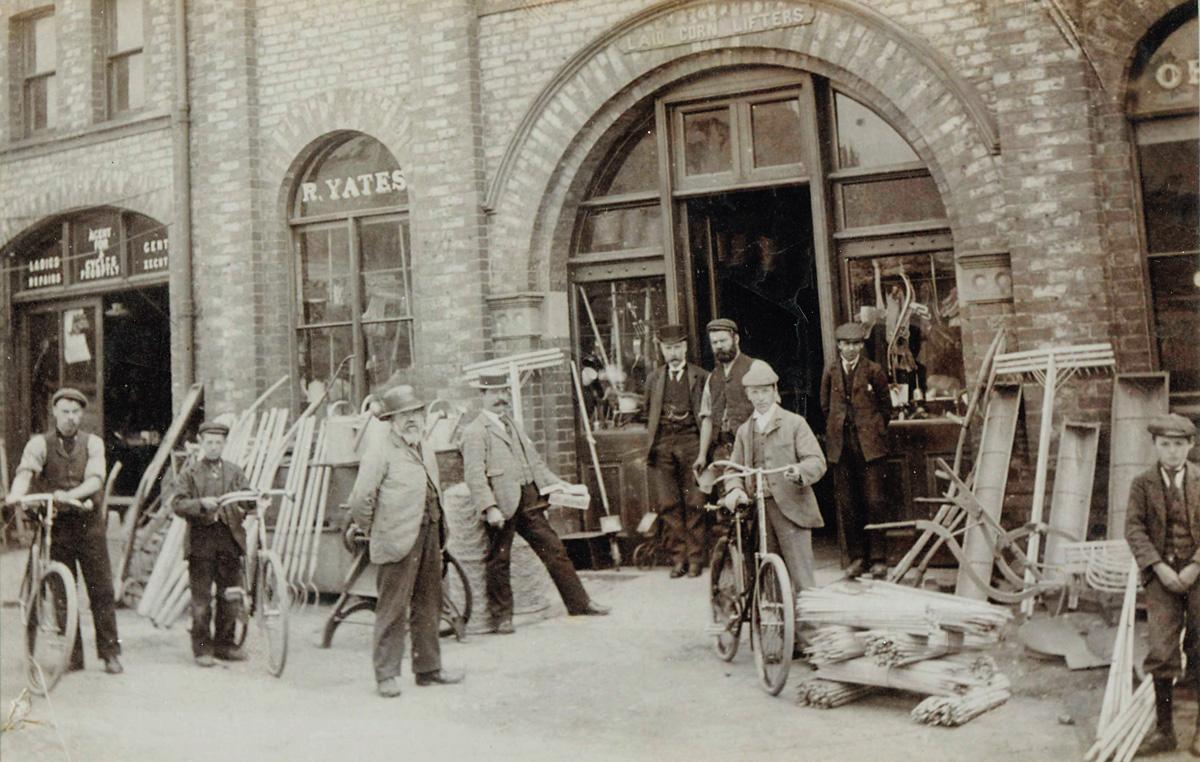Reporter KAREN DARLEY talks to the man behind a new book which has been written about Malton’s history
MALTON is a place where businesses and families have flourished for centuries according to a new book about its history – and the author suggests that its best days may yet lie ahead of it.
Norman Maitland has researched and written the book ‘300 years of continuity and change: families and business in Malton from the 18th century to the present’ to mark the tercentury of the Fitzwilliam family’s involvement in the town.
As well as consulting local archives, Mr Maitland interviewed residents who ran or still run local businesses in the town.
Mr Maitland said the book explored the lives and times of the early owners and celebrated the part which other families and businesses have played in Malton’s past, together with the vital part they are playing in ensuring a vibrant future.
“From the moment the Borough of Malton was purchased by Thomas Watson Wentworth in 1713, money was being invested in the place,” he said.
“Thomas had substantial personal wealth and huge business interests in the West Riding of Yorkshire. He had the means immediately to refinance the construction of the Derwent Navigation and the motivation to do so since it would ease the movement of heavy goods between different parts of Yorkshire.”
Norman said Thomas had also set about improving the facilities in the town.
“According to records of the time, a massive programme of improvements was set in train including, in 1749, the construction of what was known as the Town’s House but which we now know as the Town Hall,” he said.
“On his death, Thomas Watson Wentworth’s ownership passed to his son and to his son after him – the 2nd Marquess of Rockingham who was briefly Prime Minister of England.
“However, because the 2nd Marquess had no children, he left the Estate to his nephew the 4th Earl Fitzwilliam.
“It remains in the same family to this day; Sir Philip Naylor-Leyland who controls the Fitzwilliam Malton Estate is a grandson of one of the last Earls Fitzwilliam.”
Norman said the continuity of ownership had meant that one family has had a remarkable impact on the life and appearance of the town.
“Almost all of the large public buildings we know today were commissioned by them and many were entirely funded by them. Housing developments such as Peasey Hills – built just after the Great War – were undertaken by the Estate,” he said. “It is also remarkable in another way since according to the British Property Federation less than 10 per cent of commercial property is in private ownership.
“Most town centres are now owned by institutions like insurance companies and pension funds, investors from overseas and collective investment schemes.
“They have no personal connection with the towns they buy into or the people who live and work there and, in the main, make no contribution to these communities which have an increasingly identical physical appearance.”
But, according to Mr Maitland, the real story of Malton lies not in who owns it but in the families and business that have thrived here for generations.
“By far the most interesting part of the project was talking to people in Malton who either ran or still run long-established businesses in the Town or had connections with such businesses or with the Fitzwilliam Estate,” he said.
“For example, I met Mrs King whose father Henry Piercy was foreman of the Estate Yard until he died in 1977.
“Nothing remarkable in that until you realise that Mr Piercy’s father held the same position, as did his grandfather and, astonishingly, his great-grandfather – four generations of one family in the employment of another.”
Norman said it was in the founding and flourishing of family businesses that Malton was set apart.
“From the early part of the 19th century Malton was really open for business; the Derwent Navigation was fully open, the Turnpike road made travel and trade easier so the different stage coach services took off until the coming of the railway which made a huge difference,” he said.
“The races were flourishing and so was the Spa – it attracted new entrepreneurs to the town and kindled an entrepreneurial flair in some who already lived here.
“The descendents of those people are still in the town – many of them still in business in firms like Yates, Leefe’s, Tate-Smith, Foxes, and in a very different way at Woodalls where a relative newcomer to the town has bought a very long established business ”
Norman said there were many who would say that market towns like Malton have had their day since the largely agricultural purposes for which they evolved have changed, but he could not disagree more.
“One conclusion to be drawn from my research is that, despite what seems the very best efforts of various authorities over very many years to change the place, Malton is the town it has always been,” he said.
“It survives, joyously distinct – a home town rather than a clone town – a place with a rich and successful past in which it has adapted and thrived, but also a place whose best days are undoubtedly ahead of it.”








Comments: Our rules
We want our comments to be a lively and valuable part of our community - a place where readers can debate and engage with the most important local issues. The ability to comment on our stories is a privilege, not a right, however, and that privilege may be withdrawn if it is abused or misused.
Please report any comments that break our rules.
Read the rules hereComments are closed on this article